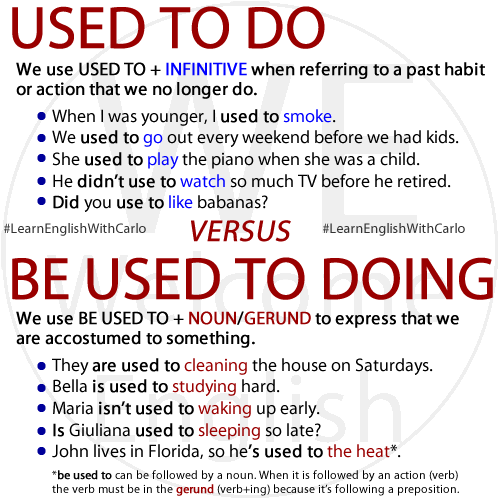“Used to” refers to past habits or situations that are no longer true in the present.
“Be used to” refers to the state of being familiar or accustomed to something in the present.

Used to:
“Used to” is a phrase used to describe past habits or situations that were true in the past but are no longer true in the present. It is used to talk about repeated actions or states in the past that are not happening now. It is followed by the base form of the verb.
Examples:
- I used to play the guitar when I was younger. (I played the guitar regularly in the past, but I don’t anymore.)
- She used to live in New York. (She lived in New York in the past, but she doesn’t live there anymore.)
Be Used to:
“Be used to” is a phrase used to indicate familiarity or being accustomed to something.
It describes a state or condition of being accustomed to a particular situation, action, or environment. It is followed by a noun or gerund (-ing form of the verb).
Examples:
- He is used to the cold weather. (He is familiar with or accustomed to cold weather.)
- She is used to driving on the left side of the road. (She is accustomed to driving on the left side because that’s the norm in her country.)
Additional Notes:
Both “used to” and “be used to” are followed by the base form of the verb, but “be used to” can also be followed by a noun or gerund.
“Get used to” is similar in meaning to “be used to” and refers to the process of becoming accustomed to something.
It’s important to note that “used to” can also be used in questions and negative sentences, whereas “be used to” follows the standard rules for forming questions and negatives in English.
Understanding the nuances between “used to” and “be used to” is essential for expressing past habits and describing familiarity or adaptation to situations in English.
